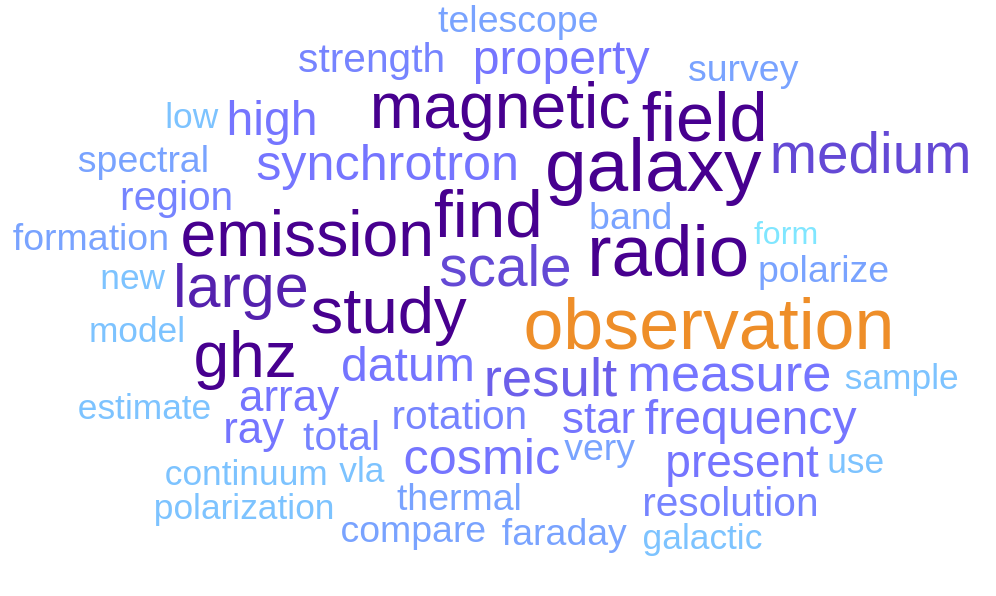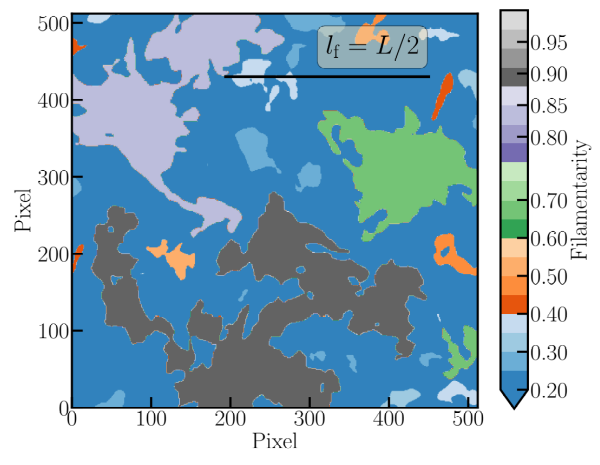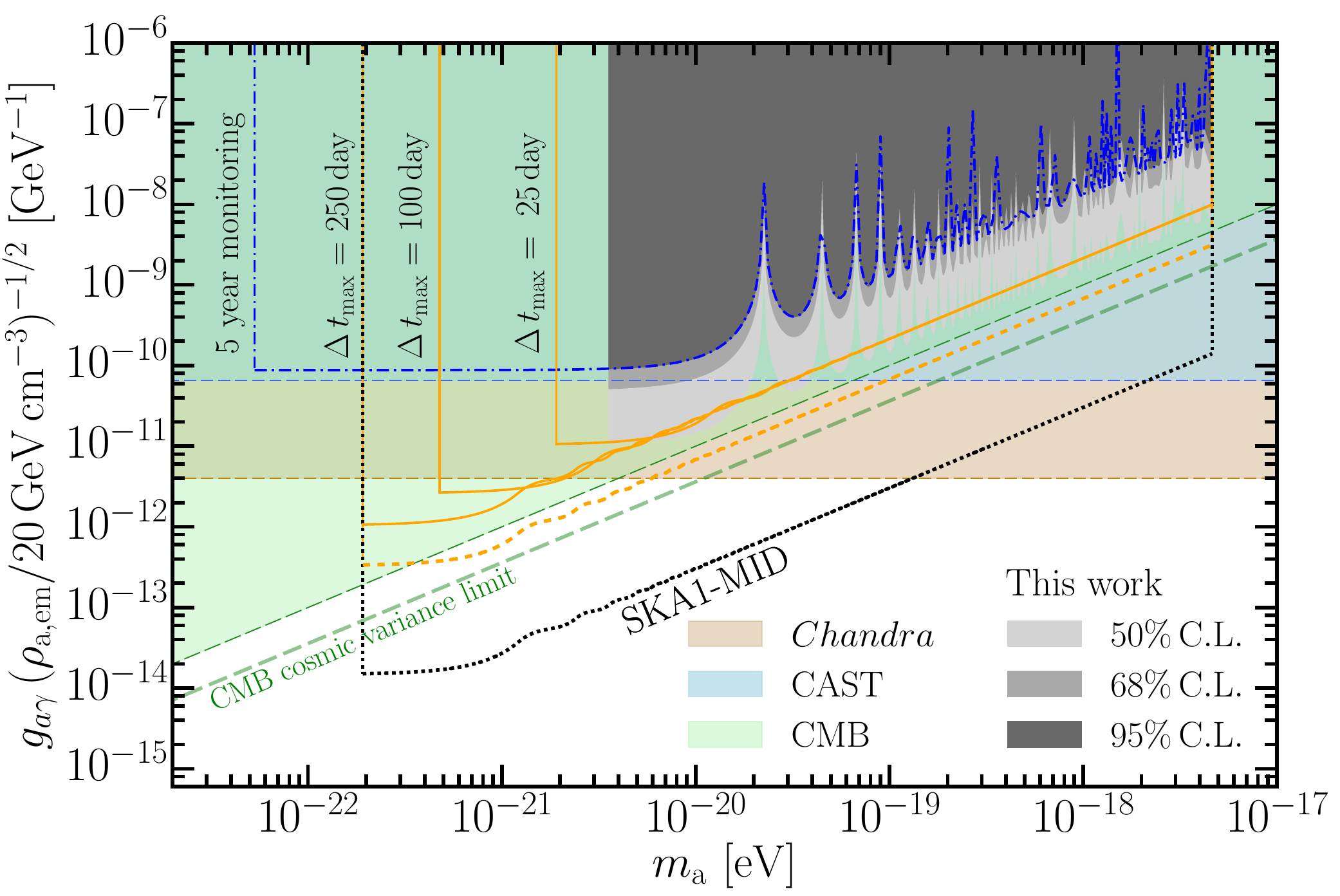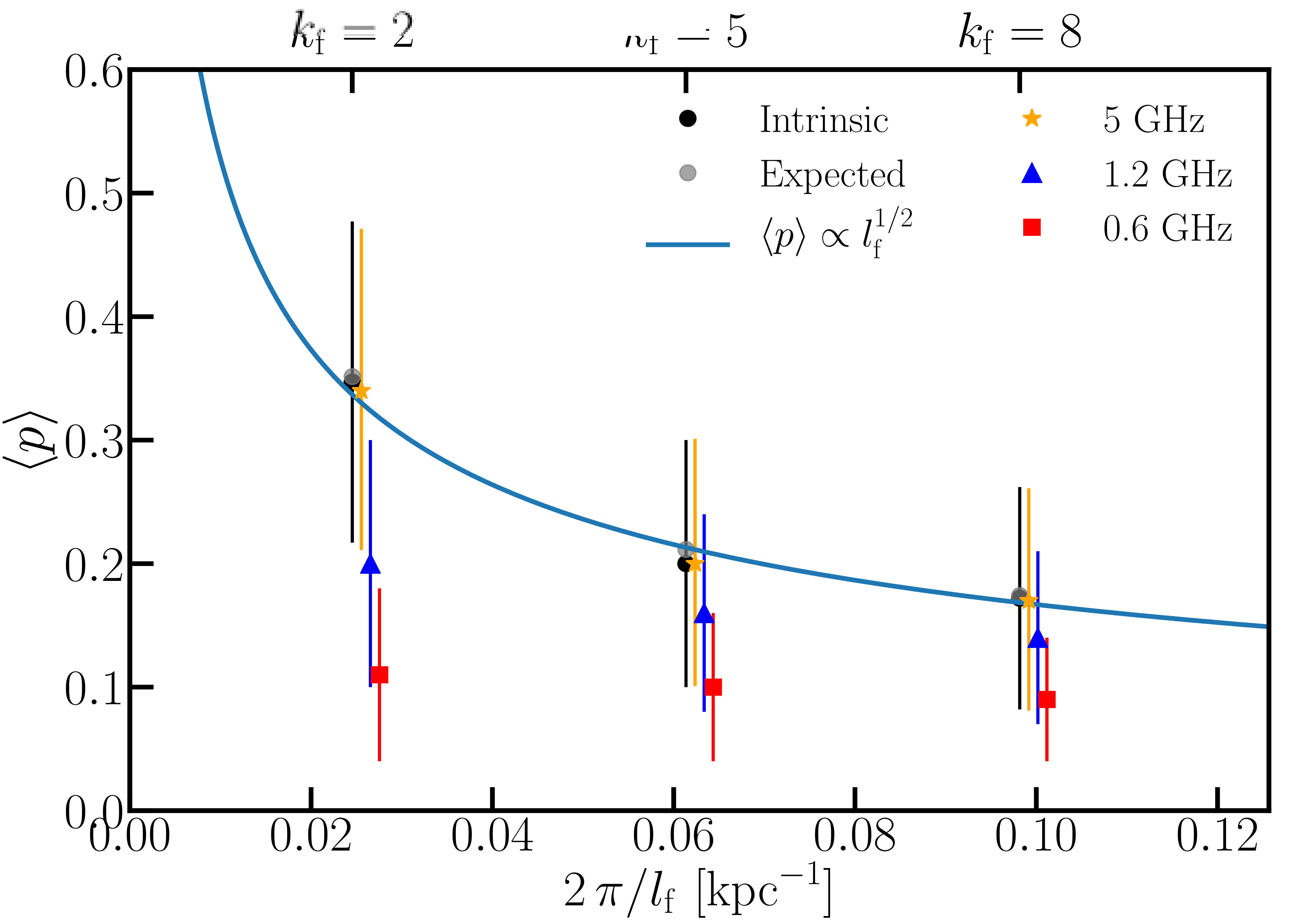What I am up to!

My research in a nutshell! As indicated by NASA-ADS's concept cloud.
• Searching for dark matter
In recent times, my research interest turned towards pinning down various candidates for the ubiquitous, yet elusive, dark matter. I mainly search for tiny astrophysical signatures of different types of dark matter candidates in sensitive observations performed with radio telescopes.
Searching for Axionlike Particles
Axions, or their generalization, axionlike particles (ALPs) are the most promising cadidates for dark matter. Interestingly, axions are named after the detergent Axion, as they "clean-up" a fundamental problem with the Strong interaction, known as the Strong CP problem. Later it was realized that these hypothetical particles have properties that closely resembles to those of cold dark matter. In fact, although tiny, the ALP and electromagnetic fields interact that gives rise to observable phenomena. For example, the left- and right-circularly polarized photons travels at different speeds in an ALP field giving rise to achromatic rotation of the plane of polarization of a linearly polarized light known as birefringence. In the presence of magnetic fields, ALPs covert to photons, the Primakoff effect, giving rise to spectral-line type feature.
Intriguingly, the signatures of birefringence and Primakoff effect can be searched at radio frequencies by targeting suitable astrophysical systems. In Basu et al. (2021), Phys. Rev. Lett., 126, 191102, we made use of strong gravitational lensing of polarized quasars to search for birefringence signal from ALPs. Based on this technique, we are currently carrying out a joint JVLA and VLBA campaign to search for ALPs using a few lens systems.
Searching for annihilating Weakly-Interacting Massive Particles.
Weakly-Interacting Massive Particles, or WIMPs for short, are another dark matter candidate. WIMPs are believed to be produced via thermal processes in a similar way as other particles in the Standard Model of particle physics. They self-annihilate such that their number density freezes as the expansion rate of the Universe becomes larger than their annihilation rate. WIMPs annihilate via various channels producing γ-rays and e--e+ pairs. Dark matter-rich astrophysical systems are excellent laboratories to search for these WIMP annihilation products.
The e--e+ pairs give rise to emission at radio frequencies via the synchrotron mechanism when they gyrate in magnetic fields. However, in order to search for such emission, one needs to choose appropriate systems that substantially lack primary electrons produced through standard astrophysical processes, such as, supernovae explosion. Dwarf spheroidal galaxies (dSphs) are one of such suitable systems. My interest in this regard is focussed towards understanding the properties of the synchrotron emission in terms of extent when e--e+ are produced via WIMP annihilation, and via astrophysical processes. I am mainly studying the nature of the emission in the presence of decaying magnetic field, and how next generation telescopes, like, an upgared LOFAR2.0 and MeerKAT would contribute towards our quest of detecting signatures of WIMPs.
• The Radio-Infrared Correlation
The radio-infrared correlation is the tightest known correlation in astrophysics wherein the luminosities at the radio and infrared waveband from galaxies are found to be correlated over 7 orders of magnitude having scatter less than a factor of 2. What is fascinating is, the correlation alludes to a fine interplay between seemingly unrelated physical parameters describing the interstellar medium in galaxies.
Since the discovery of the correlation in 1970's, a clear understanding of the origin of the radio-infrared correlation remains elusive. Sensitive observations with modern radio (VLA, uGMRT, LOFAR and MeerKAT) and space-based infrared (Spitzer and Herschel) telescopes have releaved that the correlation holds good in various galaxy types ranging from low mass dwarf irregular galaxies to massive ultra luminous infrared galaxies in the nearby and early Universe. In order to better understand the properties of the relation in nearby and high-redshift galaxies, I investigate the role cosmic evolution of magnetic fields and energy loss/gain mechanisms of cosmic ray electrons play in setting up the correlation.
• Magnetic fields near and far
Ubiquitous magnetic fields are pervasive all across the Universe on scales ranging from few parsecs in jets eminating from black holes (AGN jets), through few tens of parsecs to kiloparsecs in galaxies, to megaparsecs in galaxy clusters and cosmic filaments. They therefore play a crucial role in the cosmic evolution of all astrophysical systems. Therefore, understanding the evolution of cosmic magnetic fields is imperative to understand the evolution of our Universe. Key questions in studies of cosmic magnetic fields are-- what amplifies and maintains magnetic fields in astrophysical systems, what drives turbulence and on which scales, and what are their structural properties?
Inferring magnetic field properties from synthetic observations
Depending on the astrophysical system, their geometry, and the nature of the turbulent dynamo operating in them, magnetic field structures are expected to have widely different morphology and physical scales. Hence, a quantitative understanding of the morphology of the associated emission, e.g., via the synchrotron mechanism, is needed. For this, using high resolution magnetohydrodynamic (MHD) simulations, I study the properties of their broadband polarized emission. We aim to connect the statistical properties and morphological features to the underlying turbulence driving mechanism in the context of the interstellar and the intracluster medium.
Magnetic field properties in distant galaxies
Cosmic evolution of grand-design large-scale spiral magnetic fields in star-forming galaxies remains an open question in observational astronomy. Due to the faintness of cosmologically distant galaxies, a major tool for probing magnetic fields in them would be through statistical measurement of Faraday rotation measure (RM) towards quasar absorption line systems. I study, how RM measured towards high metallicity DLAs can be used to infer about the large-scale field strengths, and how Fast Radio Bursts (FRBs) can be used to distinguish the field structure.
• Synchrotron foreground for CMB
The cosmic microwave background (CMB) holds crucial clues on fundamental questions concerning the initial conditions of our Universe and its subsequent evolution. Massive efforts are underway to detect the signatures of primordial gravitational waves and history of Universe's reionization, imprinted on the polarized CMB on >1° angular scales. To decipher the polarized CMB signal, understanding and removal of the foreground polarized Galactic synchrotron emission is imperative. A breakthrough in understanding of the polarized synchrotron emission and the imprint it leaves on the polarized CMB is only possible through in-depth investigations of the properties of the Galactic magneto-ionic medium.
All sky polarization survey with the SKA-MPG telescope
Along with colleagues at the MPIfR and the Bielefeld University, we demonstrated that all-sky survey using the SKA-MPG telescope would play a crucial role in robustly pinning down the polarized synchrotron foreground in the 1.75--3.5 GHz frequency range to study the polarized Cosmic Microwave Background (CMB) Radiation down to nK (10-9 K) accuracy. Such an accuracy is critical for future CMB space missions, e.g., the LiteBIRD, to detect CMB's B-mode polarization on large angular scales (>10o) originating from primordial gravitational waves.
A glimpse into recent results


Minkowski functionals as probes of morphology
The morphology of polarized emission due to action of fluctuation dynamo in an astrophysical medium induces highly filamentary structures. They can be well described by Minkowski functionals and help us to infer the turbulence driving scale. See Dutta, Sur & Basu, 2024, ApJ, 976, 168 for details.


Bounds on ALPs via gravitational lensing
Bounds in the ALP-photon coupling constant (gaγ) as a function of ALP mass (ma) derived from differential birefringence measured from a strong gravitational lens system. See Basu et al., 2021, PRL, 126, 191102 and Schwarz, Goswami & Basu, 2021, PRD, 103, L081306 for details.


Depolarization of cluster halo emission driven by fluctuation dynamo
Contraints on fractional polarization (<p>) can provide information on the turbulence driving scale (l_f). See Basu & Sur, 2021, Galaxies, 9, 62 for details.

